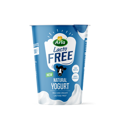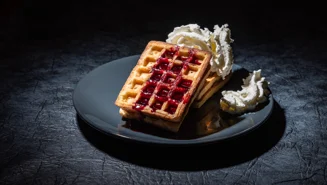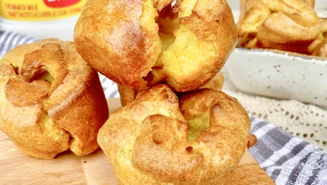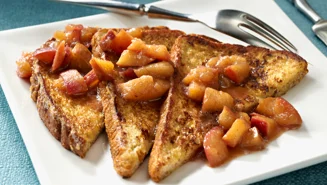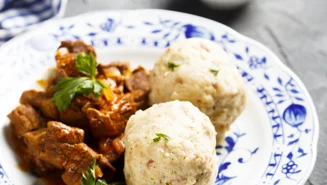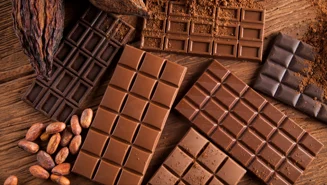
Lactose, a sugar inherent in milk, is present in dairy products, and thus, some of our favourite foods with dairy. First, it is important to know that we cannot define anything as “high-lactose foods” since there are no set rules about lactose levels. As we delve into the world of food with lactose, remember that dairy products come in many forms, each with varying lactose levels. Factors such as processing, ageing, and fermentation can significantly influence the lactose content.
Which foods contain lactose?
Lactose is found in mammalian milk such as cow's, goat's, and sheep's milk. This means that milk, yoghurt, butter, cheese, cream, and all other dairy products contain lactose. And, as such, all food made with dairy have lactose, too. These include bread, baked goods, ice cream, gelato, frozen yoghurt, condensed milk, some protein powder, custards, mousses, some breakfast cereals, salad dressings, and much more.
Since so many products have lactose with either milk or milk derivatives, it can be tricky to figure out which ones do or do not have lactose. The best way to find out whether a product contains lactose is to look at the product label. In most cases, there are lactose-free versions of the regular products available as well. You can read more about lactose-free options further down.
What foods are higher in lactose?
Exploring the spectrum of lactose levels in common foods reveals that it is not just limited to milk and plain dairy products. A variety of everyday items also have relatively high levels of lactose.
Sweetened condensed milk, for instance, stands out with its concentrated lactose levels, being reduced to just a third of the original milk volume. Additionally, everyday sweets like milk chocolate and milkshakes are foods that may surprise you with their lactose levels. This also goes for soft cheeses and custards.
Check out our table below of common foods with higher lactose levels:
| Food Item | Lactose content (per 100 grams) |
|---|---|
| Sweetened Condensed Milk | 9-14 grams |
| Milk chocolate | About 7.4 grams (can vary) |
| Sheep's Milk | 5.1-5.4 grams |
| Milkshake | About 5 grams (can vary) |
| Cow’s milk | 4.6-5 grams |
| Custard/Pudding | 4-6 grams |
| Goat’s milk | 4.1-4.7 grams |
| Cream | 3-4.5 grams |
| Ricotta cheese | 2-4 grams |
| Cottage cheese | 2 grams |
| Cream cheese | 1.2-2.3 grams |
Remember the lactose-free variants
There is also a wide selection of lactose-free variants to choose from.
Milk is the basis for all dairy, so to start, check out our article 'What is lactose-free milk?'. To get to know more, read our articles about lactose-free goat's milk, sheep's milk, and buttermilk.
Some of your favourite yoghurt types come in lactose-free versions. Read more about them in our articles 'Is yoghurt lactose-free?' and 'Is Greek yoghurt lactose-free?'.
As for cheese, soft and fresh varieties like cottage cheese, cream cheese, ricotta, and mozzarella usually have higher lactose levels than aged and hard cheeses like cheddar and parmesan, which, generally, have low levels and some even only with trace amounts.
You can find out more in our article about different types of lactose-free cheese or get an overview of cheese with lower levels of lactose and cheeses with higher amounts of lactose, respectively.
As you can see from our examples, you can find an array of lactose-free products, all carefully crafted to retain the flavours, textures, and creaminess that you have come to expect from regular dairy products. These variants are often made with the same ingredients as their lactose-containing counterparts but with the lactose removed, that is, broken down into simpler sugars.

